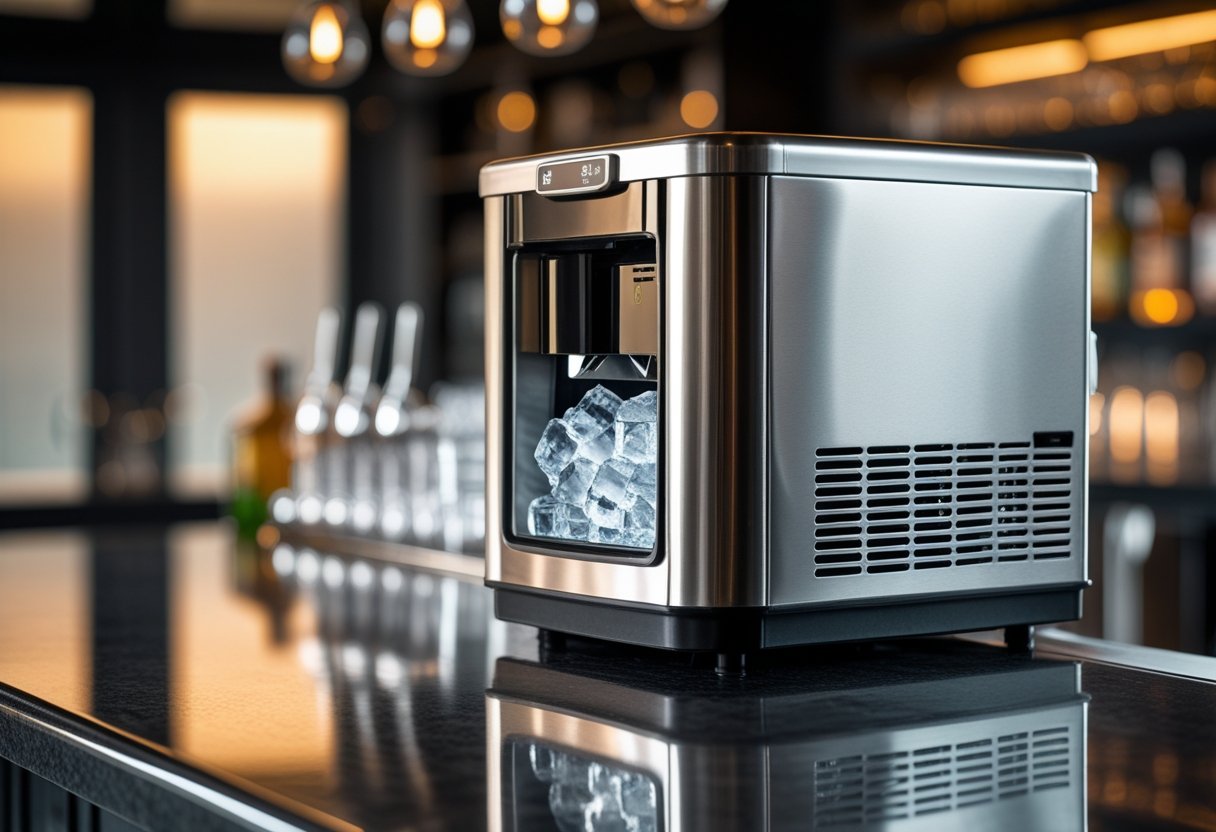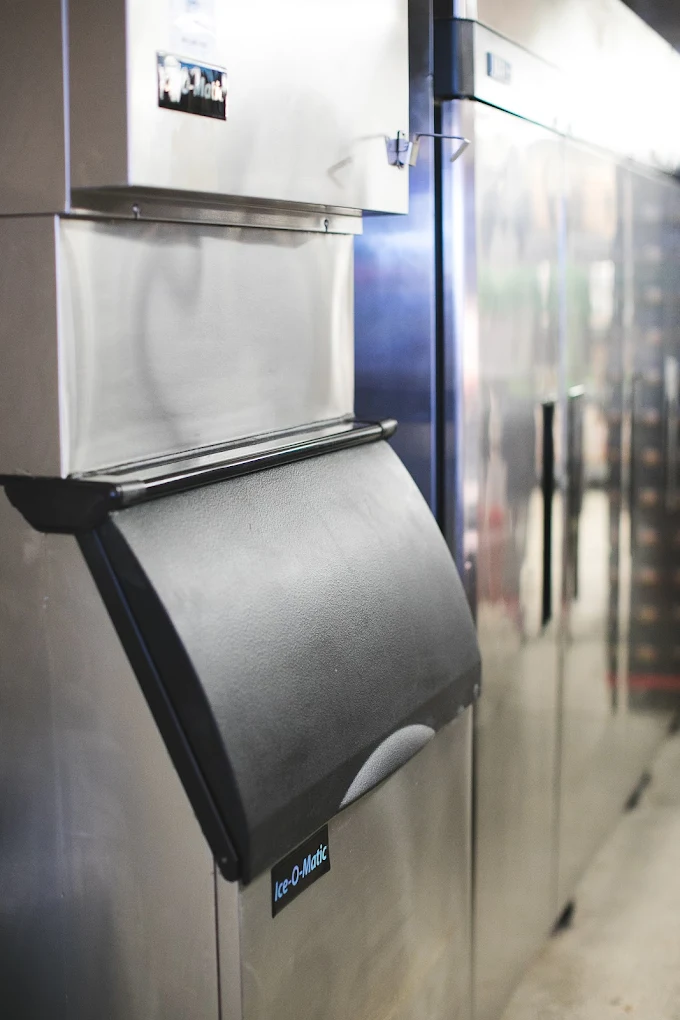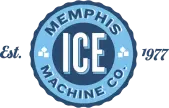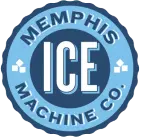proudly serving
the mid-south

What to Check Before Calling for Emergency Refrigeration Repair to Save Time and Money
When your commercial refrigeration starts acting up, you want a quick fix—nobody likes wasting time or cash. Before you call in the pros for emergency refrigeration repair, check the basics: power supply, thermostat settings, odd noises, leaks. Sometimes it’s the little things that trip you up, and spotting them early can keep your business humming along.
Take a look for frost buildup or extra moisture inside. Are the door seals tight? It’s amazing how often a loose seal or a bit of hidden frost can cause headaches. Memphis Ice has been helping local businesses figure out these basics for nearly 50 years—keeping ice machines and coolers on track.
From restaurants to hospitals, reliable refrigeration is non-negotiable. A quick check on your end might just buy you time before expert help steps in.
Assessing the Urgency of Refrigeration Issues
Before you reach for the phone and call for emergency repair, try to size up how bad things really are. Look for signs of failure, consider what’s at stake with your stored goods, and think about any recent changes in how your unit’s been behaving.
Identifying Warning Signs of Failure
Watch for obvious stuff: weird noises, frost where it doesn’t belong, or the unit just not getting cold enough. If the compressor’s suddenly louder or the fans never seem to stop, take note. Water pooling inside? That’s another clue.
Temperature swings are trouble—just a few degrees can put your goods at risk. Grab a reliable thermometer and double-check.
If you spot error codes or warning lights on digital controls, jot them down. Techs love that info; it speeds up the fix.
Determining Impact on Stored Goods
Open the cooler and see what you’re dealing with. Meat, dairy, produce—those spoil fast if things warm up. If you see ice cream turning to soup or drinks getting tepid, you’ve got a problem.
Move sensitive stuff to backup coolers if you can. Not all products are equally fragile, so knowing what’s in there helps you decide how urgent the situation is.
If inventory’s on the line, don’t wait—get your refrigeration service on the phone. Memphis Ice moves quick to help you dodge big losses.
Noting Recent Operational Changes
Think back—did you overload the unit? Stuffing it full of warm product can overwhelm the system. Have you changed temp settings, left doors open more, or noticed flickering power?
Even small tweaks can throw things off. If trouble started after a change, try undoing it and see if things settle down.
Check for blocked vents or dirty coils, too. Airflow matters more than you’d think.
Jot down anything unusual. It’ll make your tech’s job way easier.
Checking Power and Electrical Connections
Before you call for emergency refrigeration repair, take a good look at the power and electrical connections. You’d be surprised how often it’s just a loose plug or tripped breaker. A few minutes here might save you a service call.
Inspecting Power Supply
First, is your unit actually plugged in? Sometimes cords work loose, especially in busy spaces. Make sure the plug’s snug and the cord isn’t damaged.
If it’s plugged in but dead, test the outlet with something simple like a lamp or phone charger. No power? You might be looking at a bigger electrical issue.
Always cut the power before poking around wires—nobody wants a shock. Frayed or burnt wires near the compressor or control panel? That’s a job for a pro.
Examining Circuit Breakers and Fuses
A tripped breaker or blown fuse can stop your fridge cold. Check your electrical panel—any switches flipped off? Reset the breaker by flipping it off and on.
If it trips again right away, don’t force it. That’s a sign you need a qualified technician.
Fuses blown? Swap them out for the exact type your system needs. Using the wrong one can wreck your equipment.
Ensuring Secure Plugs and Outlets
Wobbly plugs or cracked outlets can mean trouble. Unplug and replug—if it feels loose, you might need a new plug or outlet.
Look for scorch marks or weird smells around the outlet. That’s a fire risk.
Make sure the outlet matches your unit’s needs—extension cords or power strips aren’t a great idea for refrigeration. They can cause voltage drops and headaches.
If you spot anything sketchy, Memphis Ice techs can help you sort it out. They’ve been at it since 1977, so they’ve seen it all.
Evaluating Thermostat and Temperature Settings
Before you panic and call for emergency refrigeration repair, double-check your thermostat and temp controls. Make sure the thermostat actually works, your temperature settings are right, and watch for weird temp swings. Sometimes it’s just a setting or sensor issue.
Confirming Thermostat Functionality
See if your thermostat’s kicking the cooling system on and off when it should. Listen for the compressor or fan when temps rise above the set point. Silence? Could be a bad thermostat or a loose connection.
Look for obvious damage, loose wires, or dirt. Dirty sensors can mess up readings. Try resetting to default and see what happens. Still nothing? Might be time for a pro. Memphis Ice can check and swap out your thermostat if needed.
Verifying Set Temperatures
Check your thermostat’s settings. Walk-in coolers generally want 34°F to 38°F, freezers closer to 0°F to 10°F. Too high or low, and you’ll have problems.
Use a good thermometer inside and compare it to the display. If they don’t match, your thermostat might be off or broken. Getting this right protects your products and keeps things efficient.
Monitoring for Unusual Temperature Fluctuations
Keep an eye on temp swings during the day. Some variation’s normal, but big or fast changes are a red flag. Could be the thermostat, leaky door seals, or just the unit struggling.
Notice patterns—like temps spiking during busy hours or hot weather? Write them down. It helps the tech diagnose things faster. Regular checks can save you from sudden breakdowns.
Inspecting Refrigerant Levels and Leaks
Don’t ignore refrigerant issues—they can spiral fast. Low refrigerant or leaks make your system work overtime and can burn out components. Here’s what you can spot yourself:
Spotting Visible Refrigerant Leaks
Look for oil stains or wet spots around pipes, joints, and fittings. Leaks often leave oily marks where you’d least expect them.
Frost or ice patches in odd spots? That often means refrigerant’s escaping and cooling where it shouldn’t. Either way, time to call in a pro.
Listening for Hissing Sounds
Hear a faint hissing or bubbling near the lines? That’s often refrigerant sneaking out under pressure. Focus on valves, connections, and coils.
Don’t ignore these sounds—it’s your system crying for help.
Observing for Ice Build-Up
If you see ice or frost on the evaporator coil or cooling lines, you might have a refrigerant leak or low charge. When refrigerant’s low, coils can’t stay cold enough, and moisture freezes in weird places.
Check your cooler walls and coils every month. Ice where it doesn’t belong? Get a refrigerant check before it gets worse.
For solid service, Memphis Ice has been on the job since 1977. They know how to keep things chill.
Examining Airflow and Component Blockages
Good airflow is everything. Before you hit the panic button, check vents, fans, and coils for blockages or dirt. Sometimes a blocked vent is all that’s wrong.
Checking Vent and Fan Operation
Look at the air vents—are boxes or bags blocking them? Blocked vents mean uneven cooling and warm spots.
Listen to the fan motors. Grinding or rattling? That’s not normal. If the fan won’t spin or sounds off, the system’s struggling.
Clear away anything blocking vents or fans. Sometimes that’s all it takes.
Observing for Obstructions
Check for dust, dirt, or junk near vents, fans, or coils. Even a little buildup can mess with cooling.
Look behind and under the unit—spilled food, trash, or tangled cords can block airflow. Keep these areas tidy.
Better airflow means fewer temp swings and less stress on your machine.
Cleaning Condenser and Evaporator Coils
Dirty coils are a classic trouble spot. The condenser dumps heat, the evaporator soaks it up—if they’re caked in dust, they can’t do either.
Gently brush or vacuum off surface dirt. Don’t bend the delicate fins. Heavy buildup or grease? Call a pro like Memphis Ice.
Regular coil cleaning saves money and headaches down the line.
Reviewing Maintenance and Service History
Take a minute to look at your equipment’s repair history and see if you’ve missed any maintenance. Sometimes the past holds clues to what’s going on now.
Looking Over Recent Repairs
Dig out records of recent fixes on your cooler, freezer, or ice machine. Notice any repeat problems or recently swapped parts?
If the same thing keeps breaking, there’s probably a bigger issue. Knowing when stuff was last serviced helps your tech get up to speed.
Jot down what you find. It’ll make the call go smoother and help your repair team show up ready.
Noting Missed Preventive Maintenance
Take a minute to check if you’ve missed or put off any regular maintenance tasks. Skipping things like cleaning coils, changing filters, or testing electrical parts often leads to bigger headaches later.
If you’ve let some routine upkeep slide, that might be why your system’s acting up now. Be upfront with your service provider about any skipped maintenance—they’ll appreciate the honesty.
Memphis Ice always pushes for a regular maintenance schedule. It’s just the best way to keep your refrigeration humming along and avoid those “uh-oh” emergencies.
Documenting Observations for the Repair Technician
Jot down anything odd you notice about your refrigeration problem before you call for repairs. The more details you give, the faster the technician can figure out what’s going on and bring the right gear.
Recording Error Codes and Alarms
If your refrigeration unit has a display, look for error codes or alarm messages. Jot down exactly what you see—those codes can be gold for a technician.
Sometimes you’ll hear beeping or see flashing. Make a note of how often it happens and if it changes when you do something, like open the door. If there’s no screen, check for flashing lights or warning indicators on the control board.
Sharing this info gives the Memphis Ice tech a head start.
Listing Unusual Noises or Smells
Listen for weird noises—buzzing, clicking, grinding. Write down when you hear them and how long they last. A loud buzzing, for example, could point to a fan motor issue.
Also, sniff around for anything off, like burning, mildew, or gas. Those smells might mean electrical trouble or a refrigerant leak. Be as specific as you can. “Strong burning smell near the compressor” will help more than just “it smells bad.”
These notes can point the technician in the right direction, even if there’s no error code.
Preparing Your Space for Emergency Repair
Before the repair crew shows up, do a little prep to speed things along and keep your stuff safe. You want the techs to work quickly and safely, and your inventory deserves some protection too.
Ensuring Clear Access to the Unit
Make sure nothing’s blocking the way to your refrigeration unit. Move carts, boxes, or equipment out of their path. Open up hallways and doors so the team can get in and out without hassle.
Flip on enough lights so they can see what they’re doing. If your unit’s in a back room, unlock any doors or gates. Keep the area dry and free of spills or clutter.
Got a walk-in cooler? Double-check the door swings open all the way. That makes it easier to bring in tools and parts. When you give the repair team good access, you show respect for their time—and they’ll probably finish up faster.
Securing Sensitive Inventory
Don’t forget about your products. Move anything perishable or temperature-sensitive to a safe, cool spot if you can. That’ll help prevent spoilage while repairs happen.
If you’ve got coolers with ice packs or a backup fridge, use them. Label fragile stuff so the repair staff knows to steer clear.
If you can’t move the inventory, at least let the technicians know what’s inside. They’ll work around it more carefully. Protecting your stock now saves money and stress later.
Getting your space ready like this helps everyone stay focused and keeps your business rolling.
Frequently Asked Questions
Knowing what to check before calling for help can save you time and maybe even spare you a bigger problem. Watching the thermostat, peeking at key parts, and spotting warning signs really matter.
What steps should I take to troubleshoot my fridge before contacting a repair service?
Start with the basics. Is the thermostat set right? Does the door seal tightly? Any frost buildup or water pooling inside? If these quick checks don’t fix it, it’s probably time to call in the pros.
How can I tell if my refrigerator issue is an actual emergency?
If your cooler or freezer can’t keep things cold and your goods are in danger of spoiling, that’s urgent. Same goes for loud noises, leaking coolant, or a compressor that won’t run—don’t wait, get help fast.
What are common signs that my refrigeration system needs immediate professional attention?
Look for compressors that never shut off, warm air inside, ice on the coils, or water leaks. These usually mean something’s failing and you need a repair ASAP. Ignoring these signs just makes things worse.
Could you guide me through what to inspect in my fridge before making an emergency call?
Check the door gaskets for cracks or grime. If you can reach the condenser coils, dust them off. Make sure fans are spinning and the thermostat display works. These quick checks might solve small stuff—or at least help you decide if you need a technician.
What safety precautions should I follow before attempting to fix any parts of my fridge?
Always unplug the fridge before touching anything inside. Don’t mess with the compressor or refrigerant lines. Charging refrigerant or working on electrical parts is best left to someone trained. Seriously, safety first.
What basic maintenance checks can I perform to possibly avoid an emergency refrigeration repair?
Wipe down the door seals now and then, and don’t forget the condenser coils—they collect dust fast. Make sure nothing’s blocking the airflow around your unit; clutter can really mess with its efficiency. If you can, set up routine inspections to spot problems before they get serious. Memphis Ice swears by these habits for keeping your system humming all year.
Recent News

What Causes Mold Growth Inside Ice Machines And How To Prevent It Easily

Why Preventative Service Plans Save Time and Money By Avoiding Costly Repairs

Why Proper Ventilation Is Critical for Ice Machine Longevity: Simple Tips to Keep Your Ice Maker Running Smoothly

Why Regular Ice Machine Service Prevents Downtime and Keeps Your Business Running Smoothly

Why Restaurants Should Have Backup Cooling Solutions for Smooth Kitchen Operations

Why Routine Inspections Prevent Refrigeration Emergencies and Save You Time and Money



